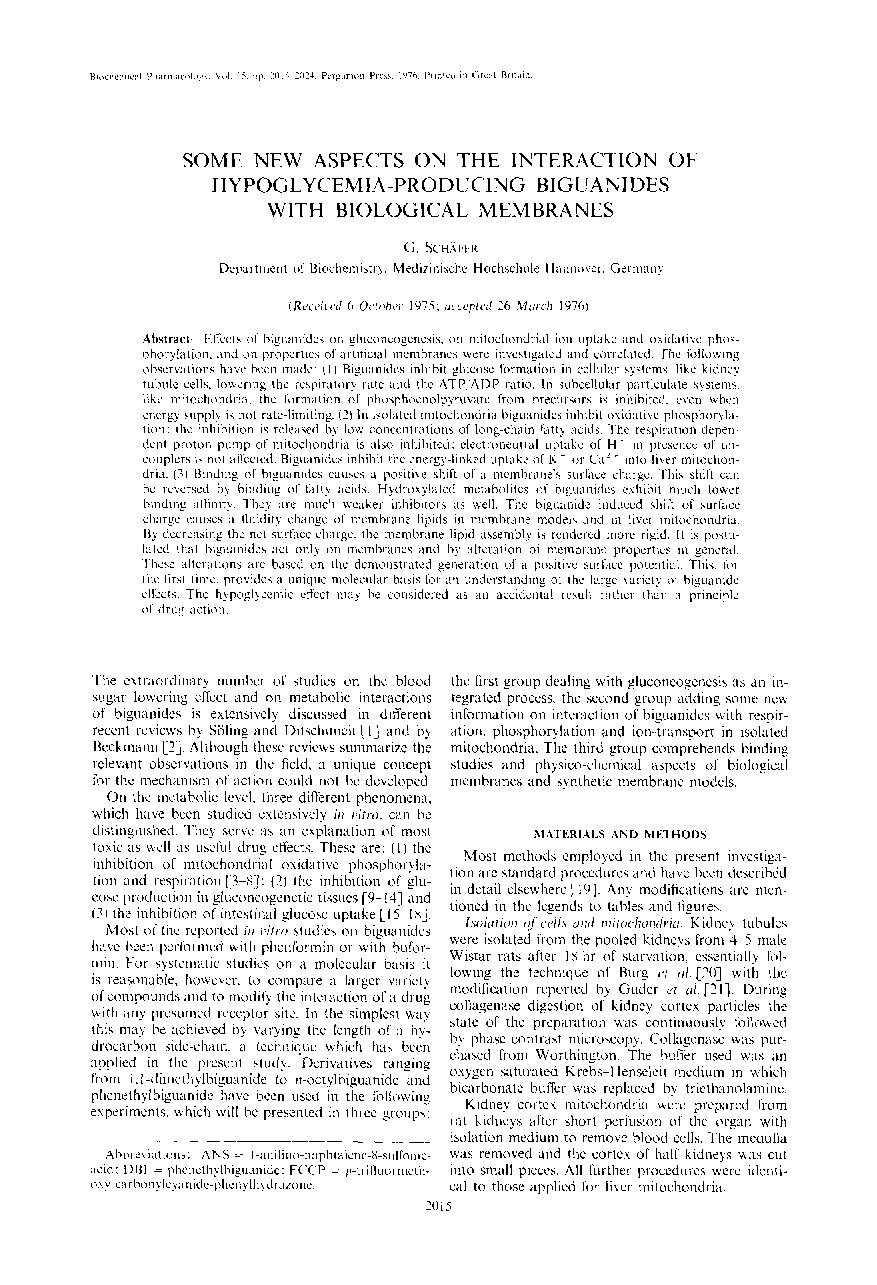| Article ID | Journal | Published Year | Pages | File Type |
|---|---|---|---|---|
| 2522538 | Biochemical Pharmacology | 2015 | 10 Pages |
Effects of biguanides on gluconeogenesis, on mitochondrial ion uptake and oxidative phosphorylation, and on properties of artificial membranes were investigated and correlated. The following observations have been made: (1) Biguanides inhibit glucose formation in cellular systems, like kidney tubule cells, lowering the respiratory rate and the ATP/ADP ratio. In subcellular particulate systems, like mitochondria, the formation of phosphoenolpyruvate from precursors is inhibited, even when energy supply is not rate-limiting. (2) In isolated mitochondria biguanides inhibit oxidative phosphorylation; the inhibition is released by low concentrations of long-chain fatty acids. The respiration-dependent proton pump of mitochondria is also inhibited; electroneutral uptake of H+ in presence of uncouplers is not affected. Biguanides inhibit the energy-linked uptake of K+ or Ca2+ into liver mitochondria. (3) Binding of biguanides causes a positive shift of a membrane's surface charge. This shift can be reversed by binding of fatty acids. Hydroxylated metabolites of biguanides exhibit much lower binding affinity. They are much weaker inhibitors as well. The biguanide induced shift of surface charge causes a fluidity change of membrane lipids in membrane models and in liver mitochonria. By increasing the net surface charge, the membrane lipid assembly is rendered more rigid. It is postulated that biguanides act only on membranes and by alteration of membrane properties in general. These alterations are based on the demonstrated generation of a positive surface potential. This, for the first time, provides a unique molecular basis for an understanding of the large variety of biguanide effects. The hypoglycemic effect may be considered as an accidental result rather than a principle of drug action.
